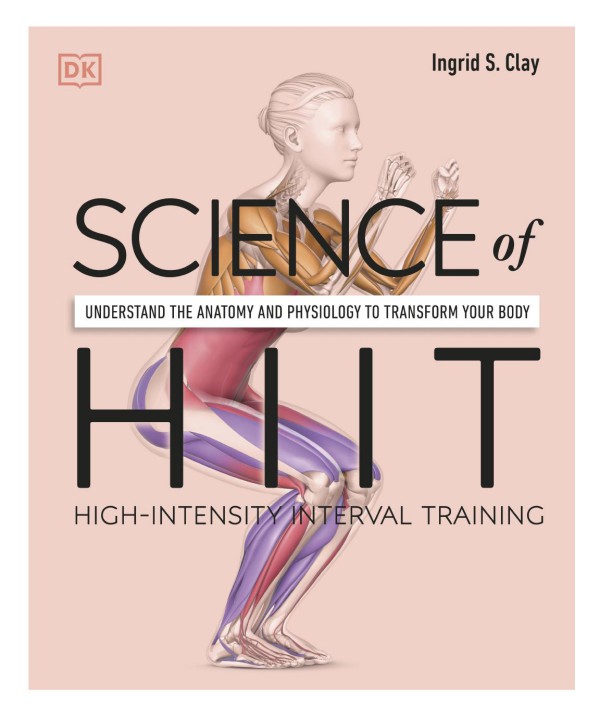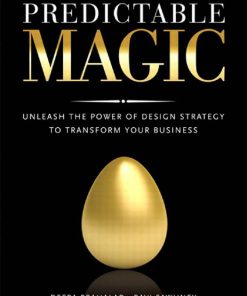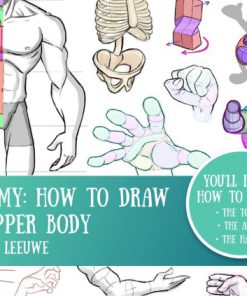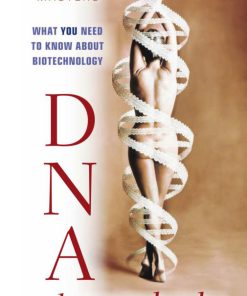Science of HIIT Understand the Anatomy and Physiology to Transform Your Body 1st edition by Ingrid Clay ISBN ‎ 0744051282 978-0744051285
$50.00 Original price was: $50.00.$25.00Current price is: $25.00.
Authors:Ingrid S. Clay; , Series:Anatomy [292] , Author sort:Clay;, Ingrid S. , Languages:Languages:eng , Published:Published:Sep 2021 , Publisher:Ingrid S Clay
Science of HIIT Understand the Anatomy and Physiology to Transform Your Body 1st edition by Ingrid Clay – Ebook PDF Instant Download/Delivery. 0744051282 978-0744051285
Full download Science of HIIT Understand the Anatomy and Physiology to Transform Your Body 1st edition after payment
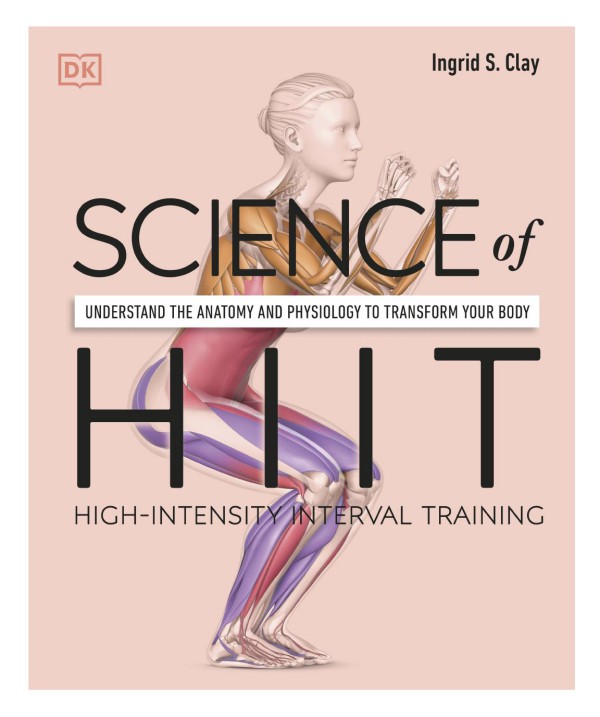
Product details:
ISBN 10: 0744051282
ISBN 13: 978-0744051285
Author: Ingrid Clay
Train your way to a leaner, stronger body in half the time or less!
Get ready to break a serious sweat with this scientific guide to HIIT training! Discover everything you need to know to achieve the best results from your HIIT workouts by understanding the muscle action needed to perfect each exercise.
Inside the pages of this fitness book, you’ll explore the physiology of more than 90 essential HIIT exercises! It is packed with:
• Specially commissioned CGI artworks depicting all the main HIIT resistance exercises ― from burpees to plank jacks ― and variations that add or reduce the challenge.
• CGI artwork features color-coding to highlight how the muscles, ligaments and joints engage, stretch and relax to perform each exercise.
• Training programs, tailored to different abilities and goals, provide suggested workouts with a progressive increase in challenges over weeks and months.
• Easy-to-follow infographics help explain the hard science behind why HIIT training is so efficient, and what beneficial physical adaptations it can bring.
High-intensity interval training is a fantastic way to lose weight and get strong by performing very short bursts of targeted exercise. Recent scientific research shows that HIIT is the most efficient form of exercise for raising fitness levels and increasing cardio-respiratory health. Science of HIIT reveals the facts to help you optimize the benefits of HITT to your body and mind.
The clear CGI artwork details the mechanics of each exercise, correct body posture, the muscles involved and how they engage to perform movements. You’ll also learn the knowledge and tools needed to be able to create your own bespoke workouts. This HIIT guide will completely transform your performance and help you smash your goals!
DK Publishing’s Science of series helps readers discover the research and scientific theories behind exercise and sport. It’s perfect for training at home or the gym. Other sport science books in this series include Science of Yoga and Science of Strength Training.
Science of HIIT Understand the Anatomy and Physiology to Transform Your Body 1st Table of contents:
Part I: Understanding the Science Behind HIIT
-
What is HIIT?
-
Definition and History of HIIT
-
Differences Between HIIT and Other Forms of Exercise
-
Popular HIIT Protocols (Tabata, 30-30, 40-20, etc.)
-
-
The Physiology of HIIT
-
How the Body Responds to High-Intensity Exercise
-
The Energy Systems: ATP-PCr, Glycolysis, and Oxidative Pathways
-
The Role of the Cardiovascular System in HIIT
-
Hormonal Responses to High-Intensity Training
-
-
Understanding Muscle Physiology in HIIT
-
Muscle Fiber Types and Their Role in HIIT
-
Muscle Adaptation and Growth from Interval Training
-
How HIIT Affects Muscle Strength and Endurance
-
-
Cardiovascular Adaptations from HIIT
-
Improving VO2 Max and Aerobic Capacity
-
Heart Rate Variability and Recovery
-
Effects on Resting Heart Rate and Blood Pressure
-
Part II: Anatomy and Biomechanics in HIIT
-
Anatomy of Movement in HIIT
-
Key Muscle Groups Involved in Common HIIT Movements
-
The Role of the Core in Stability and Power Generation
-
Joint Mobility and Injury Prevention in HIIT Workouts
-
-
Biomechanics of High-Intensity Exercise
-
Efficiency and Force Production in HIIT Movements
-
Proper Technique for HIIT Exercises (e.g., Burpees, Jump Squats, Sprints)
-
The Importance of Range of Motion and Posture
-
-
Injury Prevention and Recovery Strategies
-
Common Injuries in HIIT and How to Avoid Them
-
Active Recovery vs. Passive Recovery in HIIT
-
The Importance of Stretching and Mobility Work
-
Part III: Optimizing HIIT for Different Fitness Goals
-
HIIT for Fat Loss
-
The Science of Fat Burning During and After HIIT
-
Creating the Right HIIT Routine for Fat Loss
-
Role of Nutrition and HIIT in Metabolic Rate Regulation
-
-
HIIT for Muscle Building
-
How to Adapt HIIT for Hypertrophy (Muscle Growth)
-
Incorporating Strength-Based HIIT (e.g., Kettlebell, Dumbbells)
-
Recovery and Nutrition for Muscle Growth with HIIT
-
-
HIIT for Endurance and Cardiovascular Fitness
-
Improving Cardiovascular Health Through HIIT
-
HIIT for Athletes: How to Use HIIT for Endurance Sports
-
HIIT vs. Traditional Endurance Training
-
HIIT for Mental Health and Well-Being
-
The Impact of HIIT on Mental Health
-
Reducing Stress and Anxiety with HIIT
-
Cognitive Benefits and Mood Enhancement
Part IV: Designing Your HIIT Program
-
Building a Customized HIIT Workout Plan
-
How to Design Effective HIIT Workouts for Specific Goals
-
Structuring HIIT: Duration, Rest Intervals, and Exercise Selection
-
Beginner, Intermediate, and Advanced HIIT Programming
-
Nutrition for HIIT Performance
-
Fueling Before and After HIIT: What to Eat
-
Macronutrient Considerations for Optimal Performance and Recovery
-
Hydration and Electrolyte Balance for HIIT
-
Monitoring Progress and Staying Safe
-
How to Track Your HIIT Progress (Strength, Endurance, Fat Loss)
-
Signs of Overtraining and When to Rest
-
Long-Term Strategies for Injury Prevention and Consistency
Part V: The Future of HIIT and Emerging Trends
-
Technological Innovations in HIIT
-
Wearable Technology: Tracking Heart Rate, Calories, and Recovery
-
Virtual HIIT: Online Classes and App-Based Workouts
-
The Role of AI and Data in Tailoring HIIT for Individuals
-
The Evolution of HIIT
-
How HIIT Is Evolving in the Fitness Industry
-
New Trends in HIIT Programming (e.g., Hybrid HIIT, CrossFit, Boxing HIIT)
-
Research and Future Developments in High-Intensity Exercise Science
People also search for Science of HIIT Understand the Anatomy and Physiology to Transform Your Body 1st:
dk science of hiit
science of hiit training
science of hiit ingrid s clay
science of fitness hiit and strength training
science of fitness hiit and strength training book
You may also like…
eBook PDF
Anatomy How To Draw The Upper Body 1st edition by Mitch Leeuwe ISBN B0CQPBDJ2M 9798872365341

